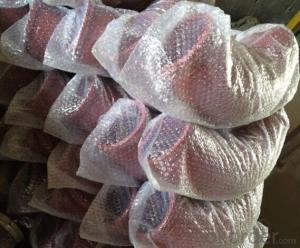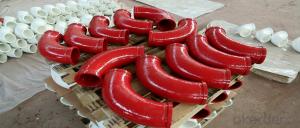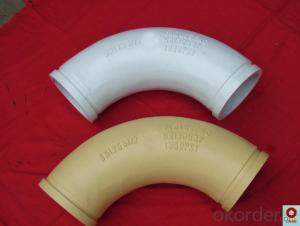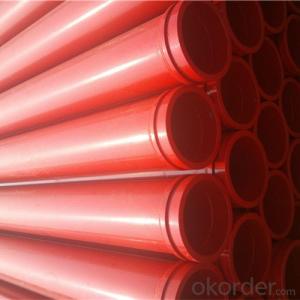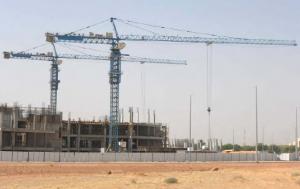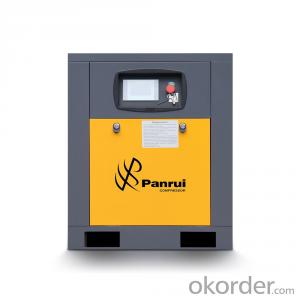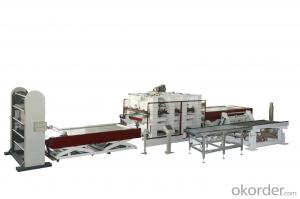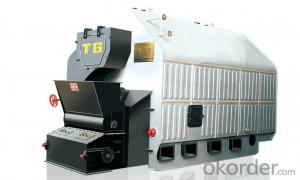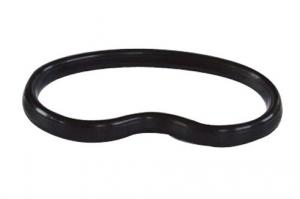CONCRETE DELIVERY ELBOW PM TYPE 20DEG R275 DN125
- Loading Port:
- Tianjin
- Payment Terms:
- TT OR LC
- Min Order Qty:
- 100 pc
- Supply Capability:
- 10000 pc/month
OKorder Service Pledge
OKorder Financial Service
You Might Also Like
concrete pump elbow table
Wear-resistant Single or Double Concrete Pump Elbow | |||||||
Type | Singe Elbow | Double Elbow | |||||
Model | DN125 | DN150 | DN175 | DN125 | |||
Material | Casting Steel ,ST52 | Inside | 40Cr | Outside | |||
Size | R275*90° | R275*90°+110 | 36° | F2000 | R275*90° | R275*90°+110 | |
R275*45° | R275*90°+211 | R400*30° | A3000 | R275*45° | R275*90°+211 | ||
R275*25° | R275*90°+411 | R400*45° | 471B | R275*25° | R275*90°+411 | ||
R275*20° | R275*90°+424 | R400*30° | 571B | R275*20° | R275*90°+424 | ||
R275*15° | R275*45°+170 | R488*90° | A1000 | R275*15° | R275*45°+170 | ||
R180*90° | R275*45°+310 | R500*90 | C1000 | R180*90° | R275*45°+310 | ||
R232*60° | R275*45°+310 | R280*90° | B2000 | R232*60° | R275*45°+310 | ||
R240*36° | 20°Lengthen | R240*36° | 20°Lengthen | ||||
R240*30° | 25°+740 | R240*30° | 25°+740 | ||||
R240*15° | 40°Zoomlion | R240*15° | 40°Zoomlion | ||||
R385*29° | R385*29° | ||||||
R315*33° | R315*33° | ||||||
Technic | Forged | ||||||
Average life | 25,000cubic | 50,000cubic | |||||
Appliciation | Used in concrete transport in construction work | ||||||
1.product profile:The double layer concrete pump elbow is developed by ourselves through new
technology and process.
2.characteristic:the inner layer of this concrete pump elbow undergoes heat treatment,and then the rigitiry can reach 62-65HRC.
3.characteristic:the outer layer of the concrete pump elbow possess good toughness properties
to protect the inner layer,so the security of the elbow is improved.
4.life:the experiment done abroad shows that the life of our concrete pump elbow can reach 35000-50000cbm,got the customers' praise
5.Beside the double layer concrete pump elbow,we produce all kinds of concrete pump parts,
straight pipe hose flange coupling and so on.
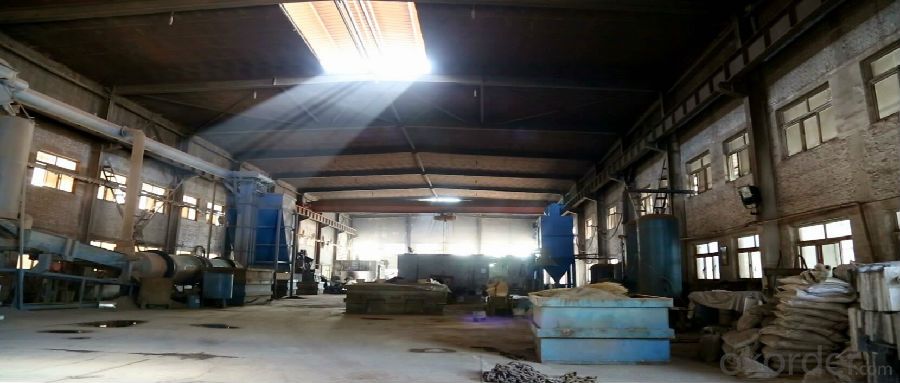
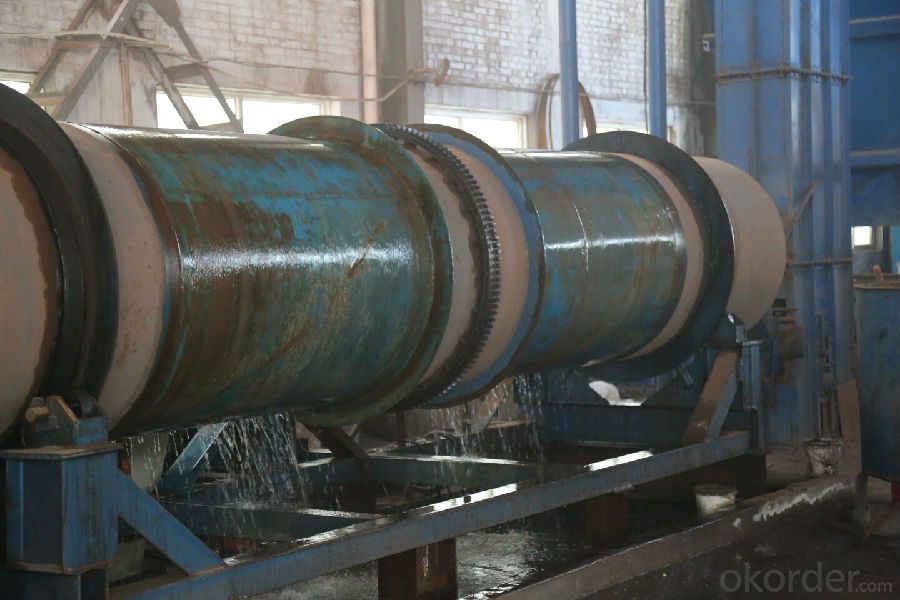

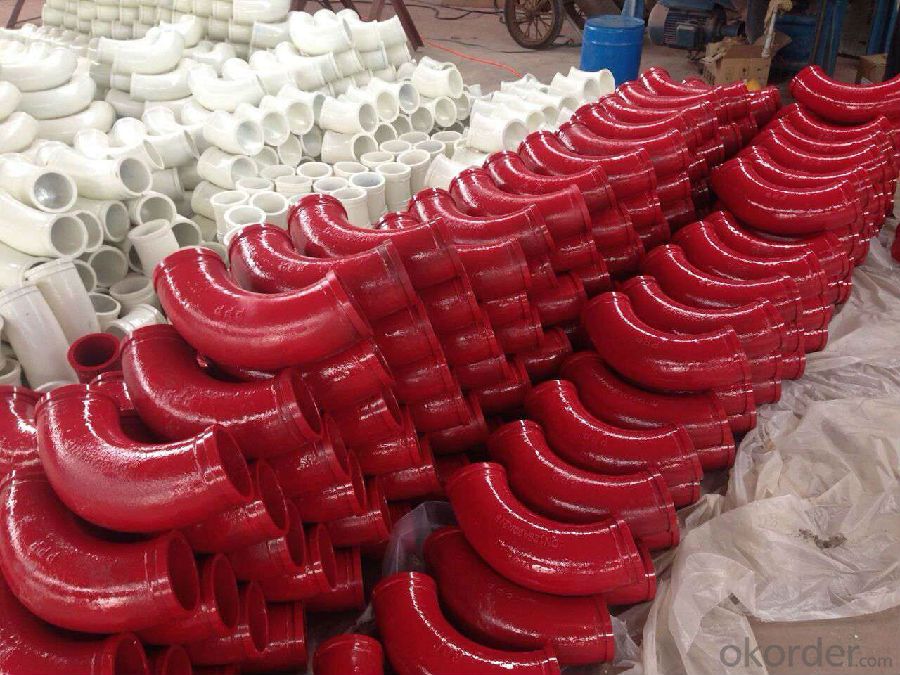
- Q:How long does a concrete pump piston typically last?
- A concrete pump piston typically lasts between 20,000 to 60,000 pumping hours, depending on factors such as maintenance, usage, and the quality of the pump.
- Q:Can I get spare parts for both piston and rotary concrete pumps?
- Certainly! Spare parts for both piston and rotary concrete pumps are readily available. Numerous manufacturers and suppliers offer an extensive selection of spare parts for these pump variants. These components encompass pistons, seals, valves, wear plates, hydraulic parts, and bearings, among others. To guarantee quality and compatibility with your specific pump model, it is essential to procure genuine spare parts from reputable suppliers. Moreover, it is advisable to establish a regular maintenance and inspection routine for your concrete pump. This will help identify worn-out parts promptly and replace them in a timely manner, thereby preventing any potential breakdowns or interruptions in your construction projects.
- Q:What are the signs of a worn-out concrete pump piston?
- There are multiple indicators that can suggest a worn-out concrete pump piston. Initially, a decrease in output or performance may signify this issue. Reduced pumping pressure or slower pumping speed can be observed as a result of this decline in performance. Another indication of a worn-out piston in a concrete pump is increased leakage. If you notice an excessive amount of hydraulic oil or water leaking from the pump, it could be an indication that the piston is no longer effectively sealing. This leakage can also lead to contamination of the hydraulic fluid, which can cause additional harm to the pump components. Furthermore, an irregular concrete flow can be caused by a worn-out piston. If you notice inconsistent and uneven delivery of concrete, such as pulsating or surging flow, it may be due to an uneven wear pattern on the piston. This can have a detrimental effect on the quality of the concrete and the overall efficiency of the pumping operation. Additionally, excessive vibration and noise during the pumping process can also suggest a worn-out piston. Vibrations may occur as a result of the piston not moving smoothly within the cylinder, leading to friction and noise. These vibrations and noises can also indicate other underlying problems with the pump, so it is important to address them promptly. Finally, a visual inspection can provide valuable information regarding the condition of the concrete pump piston. Physical damage, such as cracks or excessive wear on the piston surface, are clear indications of a worn-out piston. These damages can be caused by abrasive materials or harsh operating conditions. In conclusion, if you observe any of these signs or suspect that your concrete pump piston is worn-out, it is crucial to have it inspected and replaced by a professional. Timely maintenance and replacement of worn-out pistons can prevent further damage to the pump and ensure a smooth and efficient operation.
- Q:Can concrete pump spare parts be heat-treated or hardened for increased durability?
- Yes, concrete pump spare parts can be heat-treated or hardened for increased durability. Heat treatment involves subjecting the parts to controlled heating and cooling processes to alter their mechanical properties. This can significantly improve their hardness, strength, and wear resistance, making them more durable and capable of withstanding harsh operating conditions. Heat treatment methods such as quenching and tempering, induction hardening, and case hardening can be applied to different types of spare parts, including cylinders, pistons, wear plates, and delivery pipes. These processes help to enhance the overall performance and lifespan of the spare parts, ensuring they can withstand the demanding nature of concrete pumping operations.
- Q:What is the purpose of a concrete pump hopper agitator motor?
- To ensure a smooth and consistent flow of concrete within the hopper, the concrete pump hopper agitator motor serves its purpose. It takes responsibility for mixing and agitating the concrete mixture, preventing any settling or thickening. By keeping the concrete in a fluid state, this motor ensures easy pumping and distribution through the delivery system. Absence of the agitator motor can result in the concrete mixture becoming stiff, causing blockages and delays in the pumping process. Ultimately, the concrete pump hopper agitator motor's aim is to maintain the quality and efficiency of concrete pumping operations by ensuring a well-mixed and smooth flow.
- Q:What is the role of a concrete pump spectacle plate?
- The role of a concrete pump spectacle plate is to provide support and stability to the concrete pump's boom. It acts as a mounting base for the pipeline, allowing the pump to accurately and efficiently deliver concrete to the desired location.
- Q:What are the precautions for gas washing of concrete pump?
- During gas cleaning, the personnel shall not be close to the outlet of the discharge pipe, the pipe is turned sharply (if 90 bends) and the compressed air pipe is connected
- Q:How can a faulty hydraulic filter affect the pump's hydraulic system?
- A faulty hydraulic filter can have several negative effects on a pump's hydraulic system. The primary purpose of a hydraulic filter is to remove contaminants such as dirt, debris, and other particles from the hydraulic fluid, ensuring the fluid is clean and free from impurities. When the filter is faulty or clogged, it fails to effectively filter the fluid, leading to various problems. Firstly, the presence of contaminants in the hydraulic fluid can lead to increased wear and tear on the pump's components. The particles can cause abrasion and damage to the pump's moving parts, including the pistons, valves, and seals. This can result in decreased efficiency and performance of the pump, as well as potential leaks or failures. Secondly, a faulty hydraulic filter can cause a decrease in overall system pressure. As the contaminants accumulate in the fluid, they can restrict the flow of hydraulic fluid, leading to increased resistance within the system. This, in turn, can cause a drop in pressure, resulting in reduced hydraulic power and slower operation of the pump. Furthermore, a clogged filter can also lead to increased heat generation within the hydraulic system. The presence of contaminants restricts the fluid flow, causing the pump to work harder and generate more heat. This can lead to overheating of the hydraulic fluid, which can further damage the pump and other components of the system. Overheating can also cause the hydraulic fluid to degrade, reducing its lubricating properties and potentially leading to further wear and damage. In summary, a faulty hydraulic filter can affect the pump's hydraulic system by causing increased wear and tear on components, decreased system pressure, slower operation, increased heat generation, and potential fluid degradation. Regular maintenance, including timely replacement of hydraulic filters, is essential to ensure the efficient and reliable functioning of a pump's hydraulic system.
- Q:How can you determine when a concrete pump hose needs to be replaced?
- There are several indicators that can help determine when a concrete pump hose needs to be replaced: 1. Visual inspection: Regularly inspect the hose for any signs of wear and tear. Look for cracks, cuts, abrasions, or bulges on the surface. If you notice any significant damage, it is a clear indication that the hose needs to be replaced. 2. Leaks: Check for any leaks in the hose. If you notice any fluid leaking from the hose, it can be a sign of deterioration or damage. Even small leaks should not be ignored as they can compromise the efficiency and safety of the concrete pumping process. 3. Reduced performance: Pay attention to any changes in the pump's performance. If you observe a decrease in the pumping pressure or flow rate, it may be due to a worn-out hose. The hose may have become stretched or worn internally, reducing its effectiveness. 4. Age and usage: Consider the age of the hose and the frequency of its usage. Over time, concrete pump hoses can deteriorate due to exposure to chemicals, weather conditions, and the constant pressure they are subjected to during operation. If the hose is older or has been used extensively, it may be nearing the end of its lifespan. 5. Manufacturer's recommendations: Consult the manufacturer's recommendations regarding the lifespan or replacement intervals for the concrete pump hose. Manufacturers often provide guidelines on when hoses should be replaced based on their specific materials and construction. Ultimately, it is crucial to prioritize safety and reliability when determining whether to replace a concrete pump hose. If there are any doubts about the integrity of the hose, it is best to err on the side of caution and replace it to avoid potential accidents or disruptions in the concrete pumping process.
- Q:Can I get spare parts for concrete pump wear plates and cutting rings?
- Absolutely, spare parts for concrete pump wear plates and cutting rings are readily available. These components are crucial for the flawless functioning and optimal performance of a concrete pump. Numerous manufacturers and suppliers specialize in offering spare parts exclusively for concrete pumps, encompassing wear plates and cutting rings. You have the option to directly approach these suppliers or manufacturers to inquire about the availability and pricing of these spare parts. Moreover, there are also online platforms and marketplaces where an extensive assortment of spare parts for various concrete pump models can be found. It is always advisable to ensure the purchase of genuine and top-notch spare parts to ensure the durability and effectiveness of your concrete pump.
1. Manufacturer Overview |
|
|---|---|
| Location | |
| Year Established | |
| Annual Output Value | |
| Main Markets | |
| Company Certifications | |
2. Manufacturer Certificates |
|
|---|---|
| a) Certification Name | |
| Range | |
| Reference | |
| Validity Period | |
3. Manufacturer Capability |
|
|---|---|
| a)Trade Capacity | |
| Nearest Port | |
| Export Percentage | |
| No.of Employees in Trade Department | |
| Language Spoken: | |
| b)Factory Information | |
| Factory Size: | |
| No. of Production Lines | |
| Contract Manufacturing | |
| Product Price Range | |
Send your message to us
CONCRETE DELIVERY ELBOW PM TYPE 20DEG R275 DN125
- Loading Port:
- Tianjin
- Payment Terms:
- TT OR LC
- Min Order Qty:
- 100 pc
- Supply Capability:
- 10000 pc/month
OKorder Service Pledge
OKorder Financial Service
Similar products
New products
Hot products
Hot Searches
Related keywords

